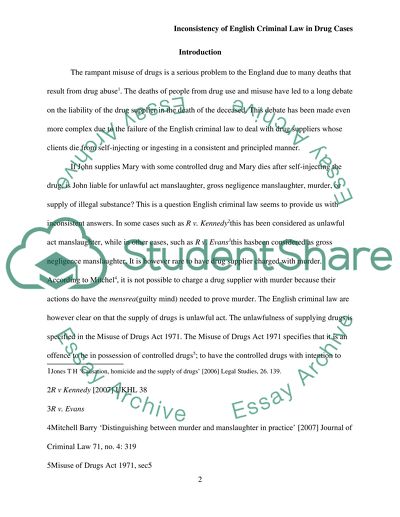Cite this document
(“'English Criminal law fails to deal with the drug supplier whose Essay”, n.d.)
'English Criminal law fails to deal with the drug supplier whose Essay. Retrieved from https://studentshare.org/law/1679044-english-criminal-law-fails-to-deal-with-the-drug-supplier-whose-client-dies-after-voluntarily-self-injecting-or-ingesting-in-a-consistent-and-principled-manner-discuss
'English Criminal law fails to deal with the drug supplier whose Essay. Retrieved from https://studentshare.org/law/1679044-english-criminal-law-fails-to-deal-with-the-drug-supplier-whose-client-dies-after-voluntarily-self-injecting-or-ingesting-in-a-consistent-and-principled-manner-discuss
('English Criminal Law Fails to Deal With the Drug Supplier Whose Essay)
'English Criminal Law Fails to Deal With the Drug Supplier Whose Essay. https://studentshare.org/law/1679044-english-criminal-law-fails-to-deal-with-the-drug-supplier-whose-client-dies-after-voluntarily-self-injecting-or-ingesting-in-a-consistent-and-principled-manner-discuss.
'English Criminal Law Fails to Deal With the Drug Supplier Whose Essay. https://studentshare.org/law/1679044-english-criminal-law-fails-to-deal-with-the-drug-supplier-whose-client-dies-after-voluntarily-self-injecting-or-ingesting-in-a-consistent-and-principled-manner-discuss.
“'English Criminal Law Fails to Deal With the Drug Supplier Whose Essay”, n.d. https://studentshare.org/law/1679044-english-criminal-law-fails-to-deal-with-the-drug-supplier-whose-client-dies-after-voluntarily-self-injecting-or-ingesting-in-a-consistent-and-principled-manner-discuss.


